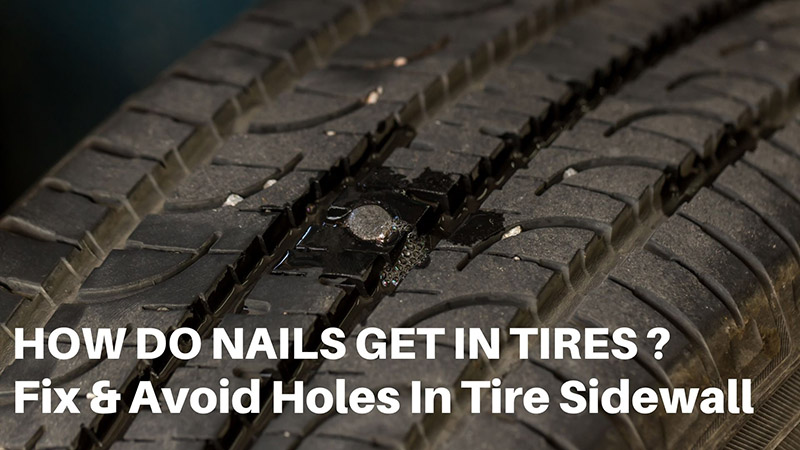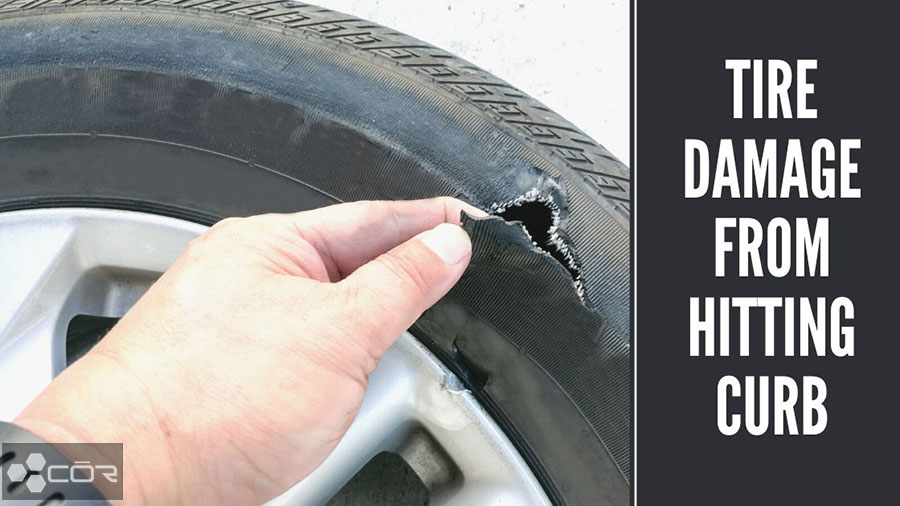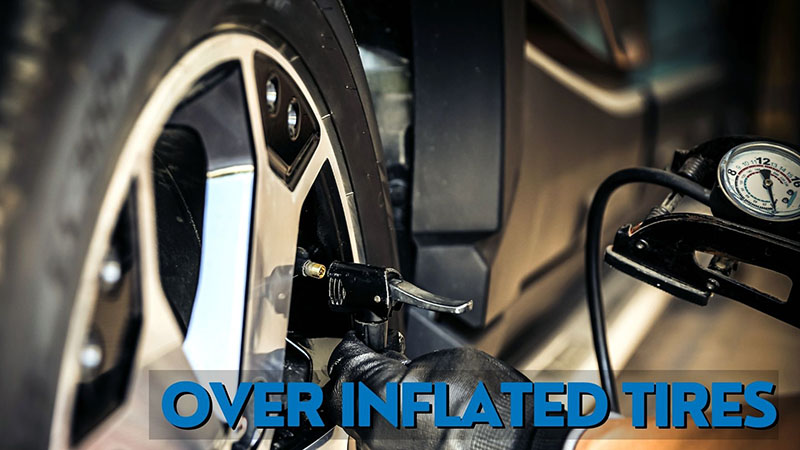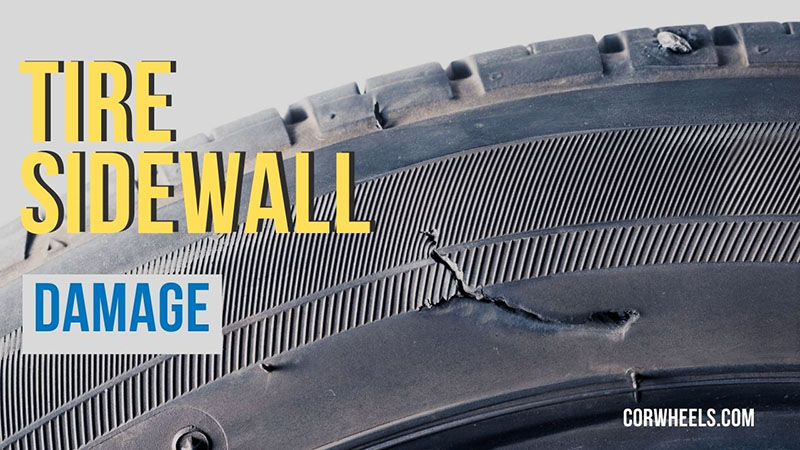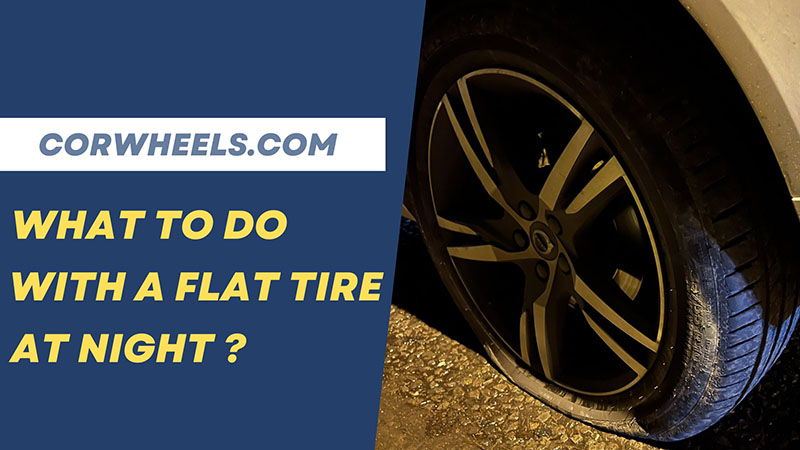Roads are littered with nails and sharp objects, silently waiting for our car to roll by. As these tiny but murderous particles plunge deep into the car tires, they cause bad highway blowouts, control loss, and tons of accident risks beyond our imagination!
A smart driver should learn how to fix and avoid these nails in the future – and that is what I am here for. Keep scrolling through my guide for more take on what causes hole in tire sidewall.
In this article:
Why Do I Keep Getting Nails in My Tires?
1. Rolling Over Piece of Debris
My Jeep did it all the time, running over stray debris pieces with nails plunging deep inside. As its wheels hit the wood with greater force than usual, these chips flew around, embedding the nails further into the rubber.
From cartridges for nail guns, construction site 2x4s, and crates to pallets, anything can be the possible sources behind these dilemmas. Even something seemingly harmless as a cardboard container may expel trim nails into my tires when I do not pay attention. We can never know.
Tips to Avoid It
Just sidestep road debris as much as possible; never mess with them, especially wood. Keep an eye out for your driving speed and make adjustments if necessary.
For instance, when driving near construction sites (whose roads are filled to the brim with excessive junk), I always remind myself to drive carefully and slowly. Right after leaving there, I pulled over to check how the tires performed.
2. Hitting Nails While Turning
Nails lurk around during sharp turns, too, unfortunately; that’s how my Jeep tires are attacked by a long, upward nail that digs deep into the tire’s underneath sidewall.
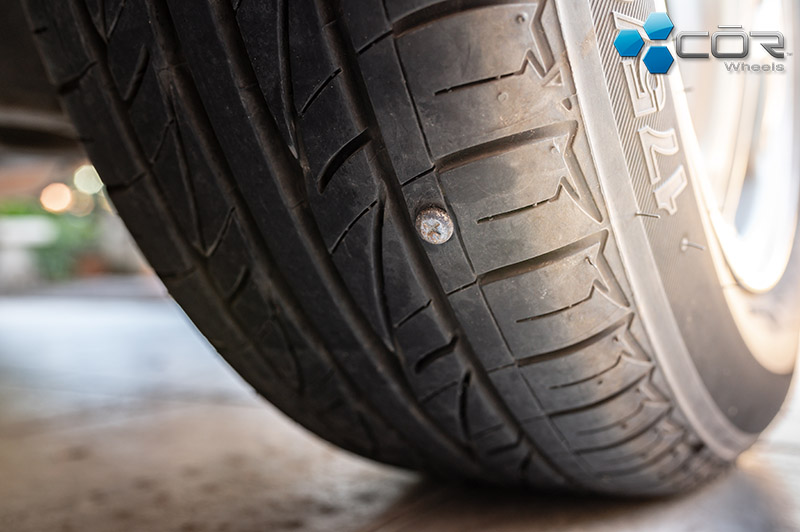
Still, that incident seems like a rare moment of bad luck; I asked around, and most drivers claim they never encountered the same issue. It’s safe to say this reason is not as common as others on my list.
Tips to Avoid It
While such mishaps are not that popular, it doesn’t hurt to learn some extra tips!
Always be extra cautious when you turn, especially near construction sites; making abrupt movements will only be the death of your car.
Drive true and straight to the line, and avoid rolling over dirt of all types. Uneven terrains here are a common source of sidewall punctures!
3. Off-road Driving
Another possible cause is off-road riding. Off-the-beaten paths are never properly taken care of, leaving thousands of tiny pieces of debris and particles that clung onto my tires the moment my Jeep crashed into them!
Deep tracks should not be taken off the consideration list, either. My friends told me their tires got hit by multiple rusty nails on high points as they drove across the ruts.
Tips to Avoid It
Going off-road rarely poses any actual risk if you travel in sparse areas or the countryside. Construction areas and campsites, however, are another story!
The campfire pits scared me to death, too, since that is where most campers burn wood and pallets with nails. Although the wood has been burned off, steel nails remain on the ground.
My two cents are to avoid those areas at all costs. Steer clear of the construction sites, too; find other alternative paths if you can.
4. Scraping The Sidewalls
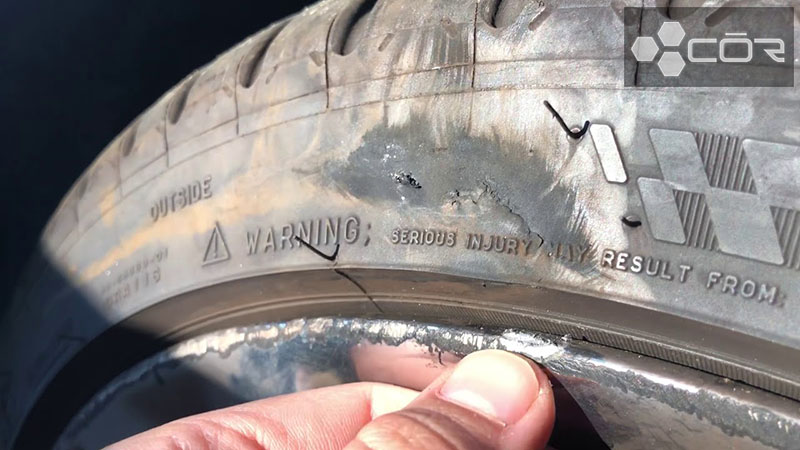
The tire sidewall scraped on anything – gravel embankment, building side, curb, you name it – can put your tires at significant risk. Loose nails hidden behind the concrete will strike through the rubber, causing tire punctures.
If you are lucky, the nails will only graze lightly on the surface and leave no physical damage. However, most drivers, including me, are not so fortunate.
Tips to Avoid It
Do not hit anything on the road contact surface. Instead of using curbs to park your car, rely on mirrors instead. That way, all possible damage to your tires, including punctures, will be eliminated or at least reduced to a minimum.
What Happens If You Drive With A Nail in Tire?
Ignoring the nail to keep driving is among the most foolish acts I have ever seen in my fellow drivers. Once, I couldn’t help but ask one of them, Do you really want to kill your own car that badly?
As the nail penetrates the tire, it creates big holes that let tire pressure escape, slowly deflating the car. And when the PSI drops below the recommended level, the tire either fails or becomes entirely damaged, leading to collisions, crashes, accidents, and even explosions while driving.
That’s why I always tell my friends to stop driving as soon as they find tire-popping nails or sharp items within the rubber. The best course of action is to push the car to the nearest tire shop – or have roadside services/tow trucks do so for you.
Should I Pull A Nail Out Of My Tire?
Yes, if the nail has not created a puncture yet. With a little bit of expertise and attention, pulling it out of the tire is totally within reach; been there, done that! Trace along my steps on how to fix a tire with a nail:
Step 1. Spin Tire Tire to Examine The Treads/Identify The Nail (Do Not Pull It Off Yet!)
Most of the time, spotting the nail isn’t even challenging; they often stick out clearly under my Jeep, catching my eyes right at first glance.
But what if it is hidden so well that casual inspection won’t do? Fortunately, I have a simple trick up my sleeve.
Spray bubbly solution (ex: window cleaner) all over the tire, then fill it with air. Spots where bubbles emerge indicate the source of the leak!
Step 2. Remove The Nail or Screw From Your Tire Manually
- For screws: Simply use a screwdriver or drill to unscrew it. It barely takes me more than 2 minutes.
- For nails: Use pliers, vice grips, or claw hammers to get it out. Do not freak out if your radial tires go flat or make hissing sounds; it just means the air pressure is escaping. I will tell you how to plug the rear tire and refill it anyways, so no worries.
Step 3. Ream The Nail Holes
Now that the screw or nail has been removed, we enter the next step: “reaming” the hole.
A tire patch kit often has a tool with the label “file” at its endpoint. Push the tool into the hole, then pull it in and out several times. That will help rough the hole out.
Step 4. Thread Your Plug Tool And Insert The Plug Manually
After the holes are reamed properly, take the plug needle off your tool kit and crimp the plug between its end. Brace yourself; it’s time to seal your tire!
Here’s how I get on with it:
- Insert my plug needle into the tire hole and push in. I didn’t stop until only a very small portion of that plug stuck out.
- Yank the tool of the tire; the plug would still stay on the hole. I trimmed the extra plug end that still stuck out, to make it fit the hole snugly.
Note that these tips are only doable if this is the first time you have ever plugged/patched that particular tire. A tire with existing patches won’t likely be able to handle another adhesive patch; just replace your tires at this point.
How Much Does It Cost to Fix Tread Nails in Tires? Is It Under Warranty?
Nails that can be fixed will cost about $10 to $25 in local tire shops – not a bad deal if you ask me. However, these numbers do not stay fixed and will likely differ across each region and brand; your best bet is to check out their pricing on official websites.
And I was pleasantly surprised upon checking the road hazard warranty policies that came with my tire; it DOES cover defects caused by road accidents – tire punctures counted. Sadly, the brand will not take any responsibility for tire holes stemming from my own fault (ex: wrong curb-mounting, underinflation, etc. ), though.
When Should You Replace Your Tires Instead of Fixing The Nails?
Large nails that leave behind trails of obvious tread holes cannot be patched or plugged no matter how much you try (I did, and it was a huge waste of time). The tire tread depth has gone through too much tire damage to recover at this point.
If you still want to repair it, fine – but keep in mind that it’s time-consuming and much more costly than just buying a new pair of tires (and not to mention, wayyy more unsafe)
The same applies to punctures too close to the sidewalls; tire’s traction has been lost entirely in such cases, and no tire repairs or fixes could mend the sidewall holes or bring the traction back.
How to Tell if Someone Puts Nails In Your Tires?
My tires stumbled onto nails just weeks after I fell out with John, my old neighbor. At first, I didn’t think much of it. But as time went by, things started to look a bit too suspicious to me:
- The nail is stuck right at the tire’s middle – like someone put it there
- There were tools left next to my car occasionally
- My car hits pesky nails way too often; I know Texas is a giant mess with dirt roads and mud, but it’s certainly not so bad to the point that there are roofing nails every two meters!
If the same happens to you, ask yourself who is the last person you argued with in recent months.
Conclusion
A nail in the sidewall of a tire is not repairable – a huge nuisance, but they are not the end of the world; in the worst-case scenario, simply have them replaced.
If you still have more questions or other puncture-related concerns, write to me for your peace of mind.

